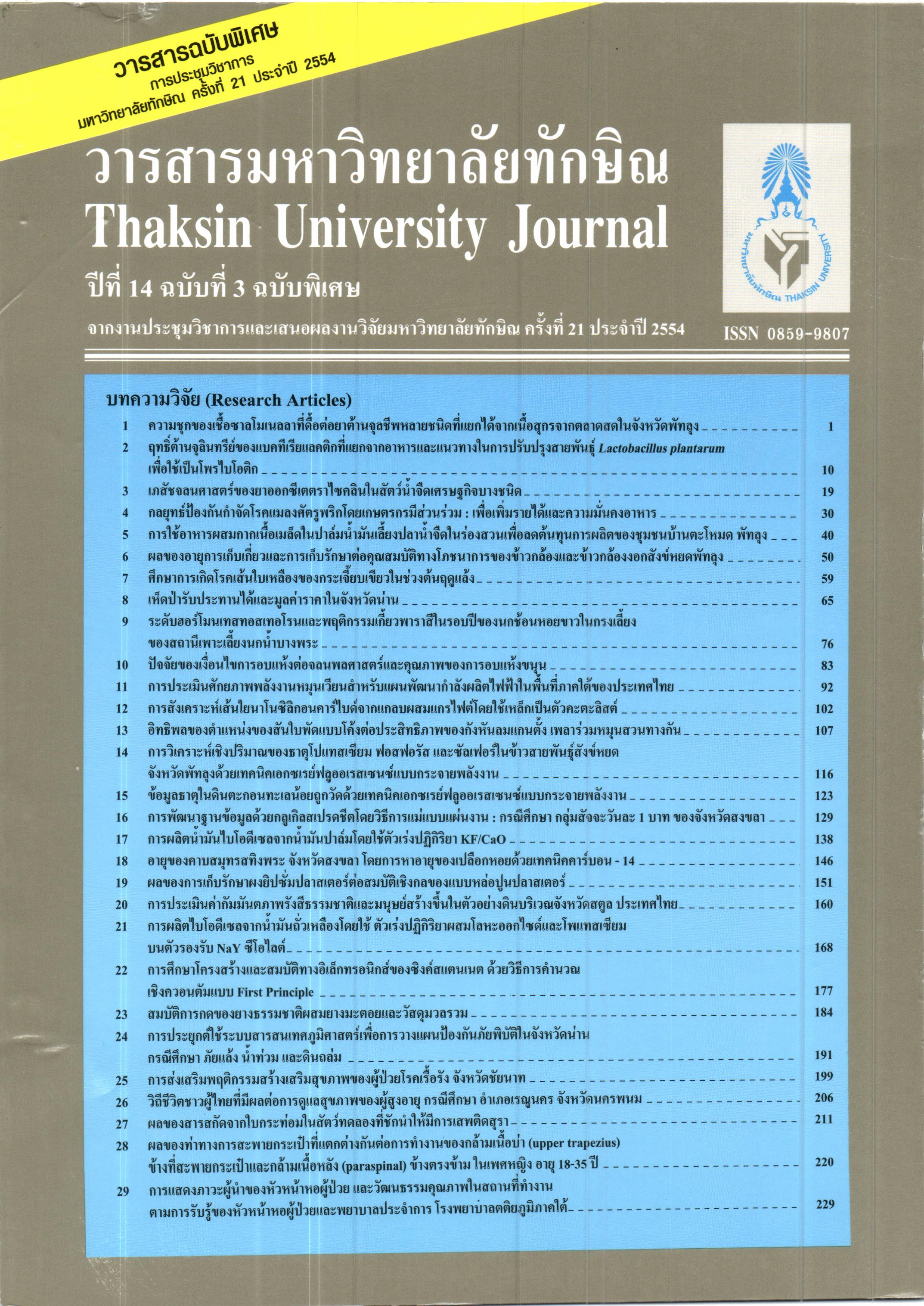การแสดงภาวะผู้นำของหัวหน้าหอผู้ป่วย และวัฒนธรรมคุณภาพในสถานที่ทำงาน ตามการรับรู้ของหัวหน้าหอผู้ป่วยและพยาบาลประจำการ โรงพยาบาลตติยภูมิภาคใต้
Main Article Content
Abstract
การวิจัยนี้มีวัตถุประสงค์เพื่อศึกษาระดับและเปรียบเทียบการแสดงภาวะผู้นำของหัวหน้าหอผู้ป่วย และวัฒนธรรมคุณภาพในสถานที่ทำงาน ตามการรับรู้ของหัวหน้าหอผู้ป่วยและพยาบาลประจำการ กลุ่มตัวอย่าง ทั้งสองกลุ่มปฏิบัติงานในหอผู้ป่วยนั้นๆ ของโรงพยาบาลตติยภูมิภาคใต้ มากกว่า 2 ปี ใช้การสุ่มตัวอย่างแบบง่าย กลุ่มละ 157 คน เครื่องมือที่ใช้ คือ แบบสอบถามการแสดงภาวะผู้นำของหัวหน้าหอผู้ป่วยและวัฒนธรรมคุณภาพ ในสถานที่ทำงาน ผ่านการตรวจสอบความตรงเชิงเนื้อหา และมีค่าความเที่ยงสัมประสิทธิ์ แอลฟ่าของครอนบาค เท่ากับ 0.97 และ 0.98 ตามลำดับ ผลการศึกษา พบว่า การแสดงภาวะผู้นำของหัวหน้าหอผู้ป่วยตามการรับรู้ของหัว หน้าหอผู้ป่วยและพยาบาลประจำการอยู่ในระดับสูง วัฒนธรรมคุณภาพในสถานที่ทำงาน ตามการรับรู้ของหัวหน้า หอผู้ป่วยและพยาบาลประจำการอยู่ในระดับสูง เมื่อเปรียบเทียบระหว่างกลุ่มตัวอย่างสองกลุ่ม พบว่า การแสดงภาวะ ผู้นำของหัวหน้าหอผู้ป่วยตามการรับรู้ของหัวหน้าหอผู้ป่วยสูงกว่าพยาบาลประจำการอย่างมีนัยสำคัญทางสถิติ (p < 0.01) วฒันธรรมคณุภาพในสถานทที่ำงาน ตามการรบัรขู้องหวัหนา้หอผปู้ว่ยกบัพยาบาลประจำการไมแ่ตกตา่งกัน
Abstract The purposes of this study were to study and to compare leadership practices of head nurses and quality culture in the workplace perceived by head nurses and registered nurses in tertiary hospitals, Southern Thailand. The sample consisted of 157 head nurses and registered nurses selected by simple random sampling from the same wards. The instrument consisted of leadership practices of head nurses and quality culture in the workplace questionnaires. The content validity was performed. The reliability by Cronbach's alpha coefficient of 0.97 and 0.98 respectively. The results showed that the average leadership practices of head nurses and average quality culture in the workplace as a whole perceived by head nurses and by registered nurses were high. When comparing the perceptions of head nurses leadership practices, head nurses had a higher than perception than registered nurses. (p<.01) Perceptions of quality culture did not differ significantly between the two groups.


